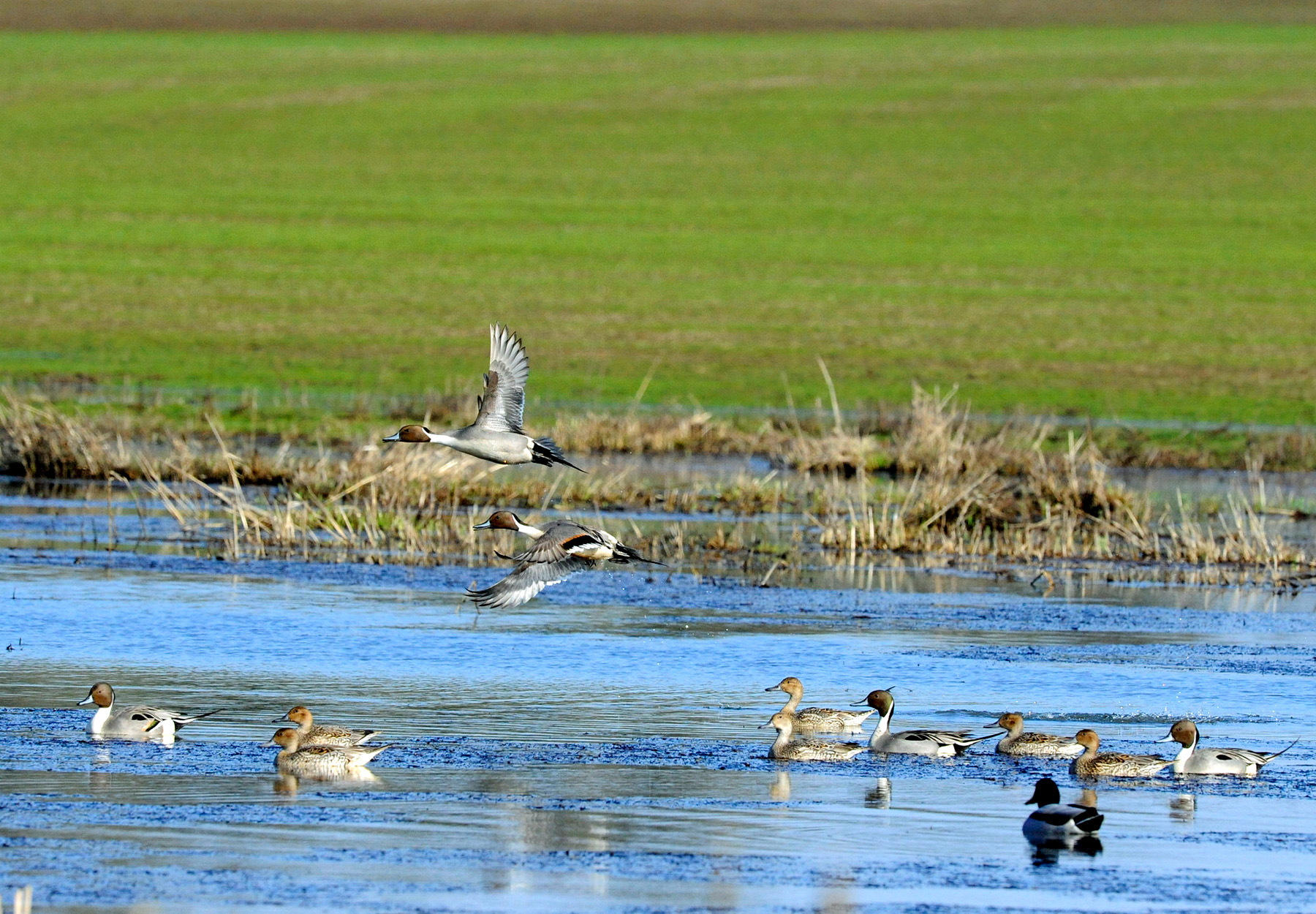On Aug. 13, Outdoor Life reported on a suspected avian botulism outbreak at the Klamath Basin National Wildlife Refuge Complex on the Oregon-California border. Biologists with the California Waterfowl Association had found roughly 500 dead birds — mostly ducks and other waterfowl — at the Tule Lake NWR, and they suspected that avian influenza could be playing a role as well.
The botulism outbreak has since been confirmed by the U.S. Fish and Wildlife Service, and refuge managers fear they could be dealing with dual outbreaks of avian botulism and High Path Avian Influenza. The death toll at the Refuge Complex is currently around 20,000 birds, according to Jefferson Public Radio.
USFWS biologist John Vrandenburg told the Oregon-based news outlet Friday that refuge staff have been finding about 500 dead birds a day at the Tule Lake NWR since the outbreak began in mid-August. Many of those have been pintails, green-winged teal, and other ducks that showed obvious signs of botulism, which is caused by a natural toxin that thrives during periods of low, stagnant water.
Similar die-offs have occurred there in the past. In 2020, the NWR Complex experienced its worst botulism outbreak in refuge history, with an estimated 60,000 birds lost.
Vrandenburg said recent water releases into Lower Klamath and Tule Lake NWRs have helped stem the losses they’ve seen so far. Those releases began on Aug. 17, after Ducks Unlimited and the CWA made appeals to the Bureau of Reclamation and other water users to send more water into the system from upstream.

Refuge managers are better prepared to deal with botulism outbreaks after the experience they had four years ago, and there is now a bird rehab hospital at the NWR Complex, according to Jefferson Public Radio. But due to concerns around HPAI, which can spread to humans and was identified at the Tule Lake NWR in July, they haven’t been able to treat any birds there yet.
“We’re well-versed in botulism response. This is a new pressure we’ve never had to deal with,” Vrandenburg told the Source Weekly, referring to HPAI.
Jefferson Public Radio reports that although officials are still waiting for more test results, the samples they’ve sent in so far have only tested positive for botulism.
In an emailed statement to Outdoor Life, a USFWS spokesperson said refuge managers appreciate the Bureau of Reclamation’s action to send more water to the Tule Lake and Lower Klamath NWRs. This is widely viewed as the best way to mitigate the current outbreak, as it helps cover up the soil-borne bacteria that causes botulism. Higher water levels also help keep the birds from concentrating and accelerating the spread of both diseases.
“One of the most valuable tools for addressing a botulism outbreak in birds is sustained inflow to displace stagnant water,” the spokesperson said. “Although it may take time, this inflow should have the effect of reducing the impacts of botulism.”
These water releases, however, rely on complicated agreements between the Bureau of Reclamation, which manages the dams on the upper Klamath, and other water users. This includes Native tribes, farmers, and irrigators. The Bureau of Reclamation must also consider the health of endangered Chinook salmon and the other fish and wildlife species that inhabit the greater Klamath River Basin. And because of all the competing demands for Klamath River water, the Lower Klamath Refuge Complex doesn’t always get enough water when ducks and other migratory birds need it most.
Established in 1908, the Lower Klamath Refuge Complex became the first waterfowl refuge in the United States, and it remains a critical stopover point for roughly 80 percent of all the waterfowl that migrates through the Pacific Flyway. In 2022, however, after a summer of severe drought, the Lower Klamath and Tule Lake NWRs ran out of water and were closed to public bird hunting. Some of the wetlands there dried up completely.

